 …that I got the first trip underway. This blog typically uses Wednesdays for reviews or nothing at all. Calling this post a review is a stretch. It does not evaluate a book or CD that you might consider buying or a movie or concert you might consider attending. It’s a look back at a road trip that not you, nor I, nor anyone else can ever recreate. Calling it a re-view (as in view again) allows me to publish it on a Wednesday without breaking any rules which means it appears on the twentieth anniversary of the first day of travel of the very first of my documented road trips.
…that I got the first trip underway. This blog typically uses Wednesdays for reviews or nothing at all. Calling this post a review is a stretch. It does not evaluate a book or CD that you might consider buying or a movie or concert you might consider attending. It’s a look back at a road trip that not you, nor I, nor anyone else can ever recreate. Calling it a re-view (as in view again) allows me to publish it on a Wednesday without breaking any rules which means it appears on the twentieth anniversary of the first day of travel of the very first of my documented road trips.
4600 Miles to Bowling Green (a.k.a. Rt66in99) is how this website began. August 21, 1999, wasn’t the first date something had been posted to the site. Besides the trip’s cover page, some auxiliary pages had been created to provide a little background and context. To be entirely honest, the August 21st posting wasn’t even the first daily journal to appear. Circumstances kept the trip from starting on the 20th as scheduled but I called it Day 0 and still made a journal entry. In addition, there had been practice entries for Day -33 and Day-202. (The only way to reach these pages is to click “Prev” on Day 0.) But August 21, 1999, was the day I departed Cincinnati, drove to Chicago, and snapped a picture of the intersection of Adams and Michigan to appear in my first from-the-road journal entry.
 A lot of things about the site have changed over the years but some things begun with that first trip have stuck. The concept of a page for each day with access to the next and previous day has been in place since the beginning as has a cover page with direct access to individual days. The idea of using the daily “Next’ and “Prev” button to (usually) represent the vehicle being used also goes back to that first trip. An animated GIF showing progress has been used on a few subsequent trips but it requires knowing the full route in advance and that’s often not the case. Besides, it’s a fair amount of work.
A lot of things about the site have changed over the years but some things begun with that first trip have stuck. The concept of a page for each day with access to the next and previous day has been in place since the beginning as has a cover page with direct access to individual days. The idea of using the daily “Next’ and “Prev” button to (usually) represent the vehicle being used also goes back to that first trip. An animated GIF showing progress has been used on a few subsequent trips but it requires knowing the full route in advance and that’s often not the case. Besides, it’s a fair amount of work.
The organization of trip cover pages and of the site’s home page have changed over the years as features have come and gone and the number of completed trips has increased, but it’s still a clunky 1999 website. At my age and the site’s age, that isn’t likely to change. I’ve done some rework to accommodate things like small screen mobile devices and I’ve incorporated a few third-party tools to support a blog, mailing lists, and RSS feeds but the site is basically good ol’ HTML with the dated appearance and other characteristics that come with it.
Advancements in technology have brought improvements to the site but even more to the road trips documented here. A series of blog articles, My Gear, documents the various hardware used on the trips while another, My Apps, documents the software. The first three My Gear chapters describe the camera, computer, and GPS receiver used on the first trip. Of these, only the camera had a direct effect on the appearance of the website. That camera was a 350 kilopixel Agfa ePhoto 780c. It may be hard to believe there were once digital cameras with sub-megapixel resolution but easy to understand how a camera upgrade could really improve the website. The sluggish (by today’s standards) Toshiba Libretto and dial-up internet left no lasting marks on the website beyond limiting the amount of data uploadable during an overnight stop. The GPS provided some statistics I used on the site but otherwise had nothing to do with it. My Apps – Chapter 1 talks about the website and image editing software used on the first trip. Maybe better image software could have made those 1024×768 (extrapolated) images look better but I have serious doubts. FrontPage Express, the web editing software I initially used, did have lasting impact. The textured beige background that is used on almost all journal pages came from its built-in inventory. My Apps – Chapter 2 is about the software I used to produce printed route instructions which the GPS sort of helped me follow.

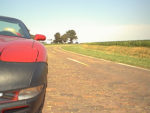 The pictures at right aren’t about advances in equipment but a comparison of equipment I had on that first trip. The picture on the left is one of the few unedited pictures I still have from the Agfa. I also carried a 35mm Nikon pocket camera which took the picture on the right. I have no idea what that proves but there it is.
The pictures at right aren’t about advances in equipment but a comparison of equipment I had on that first trip. The picture on the left is one of the few unedited pictures I still have from the Agfa. I also carried a 35mm Nikon pocket camera which took the picture on the right. I have no idea what that proves but there it is.
 The final cover page for that trip talks about it being temporary. As I said at the time, I expected it to go away because “I’ll need the space or retiring it will just seem right.” Web space became increasingly cheap and apparently retiring it never seemed right. Two decades later that first trip journal is still online and I’ve added 155 more. There is a clickable index of them all as well as a clickable collage. The collage, composed of one image from each of the trips, is a big favorite of mine. Visually skimming over it is a great reminder of what I’ve done with my gas money over the last twenty years. Pausing on any one of those images will always trigger a flood of memories which I can delve into deeper with just a click.
The final cover page for that trip talks about it being temporary. As I said at the time, I expected it to go away because “I’ll need the space or retiring it will just seem right.” Web space became increasingly cheap and apparently retiring it never seemed right. Two decades later that first trip journal is still online and I’ve added 155 more. There is a clickable index of them all as well as a clickable collage. The collage, composed of one image from each of the trips, is a big favorite of mine. Visually skimming over it is a great reminder of what I’ve done with my gas money over the last twenty years. Pausing on any one of those images will always trigger a flood of memories which I can delve into deeper with just a click.
I’m spending this twentieth anniversary at home. I was on the road when the tenth anniversary rolled around. The 1999 trip consisted of following Historic Route 66 to Los Angeles to join a caravan to the Corvette Museum in Kentucky. The 2009 trip was quite similar with the westbound portion being the Lincoln Highway to San Francisco to again caravan to the museum. That was before this blog existed or I might have done a post similar to this one. Instead, I included a brief summary of the day ten years prior in the appropriate daily journals. I began those summaries with the first posting rather than the first day of travel so they begin on the latter trip’s sixth day, August 20, 2009. The summary of the final day of the first trip ended with these words: “It’s really hard for me to imagine a twentieth anniversary for this website but it’s no easier imagining an end. Watch this space.” I’m really happy that some of you are still watching.

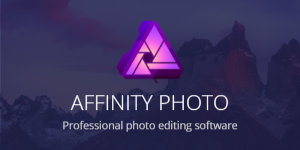
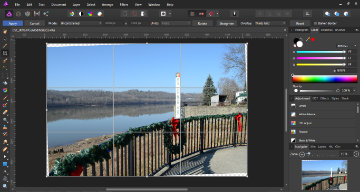 For me, up to speed isn’t all that fast. I’m basically a resize, rotate, and crop sort of guy. I was nearly at speed once those were mastered. I do, on occasion, dabble with tone a bit and do a little touch-up work. About as fancy as I ever get is the rare collage or the slightly less rare HDR. Accomplishing these with Affinity is quite different than with PhotoPlus but I eventually figured it out. I’m a long way from being a master of the software but I manage to do what I need.
For me, up to speed isn’t all that fast. I’m basically a resize, rotate, and crop sort of guy. I was nearly at speed once those were mastered. I do, on occasion, dabble with tone a bit and do a little touch-up work. About as fancy as I ever get is the rare collage or the slightly less rare HDR. Accomplishing these with Affinity is quite different than with PhotoPlus but I eventually figured it out. I’m a long way from being a master of the software but I manage to do what I need.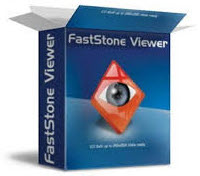
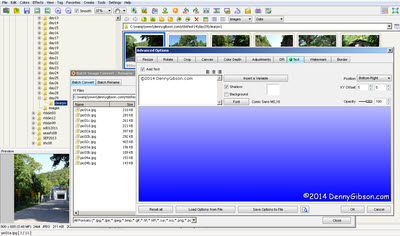 Like Easy Thumbnails, FastStone Viewer is a whiz at batch processing. The long list of supported functions includes the ability to add text or graphic watermarks. I use text which is really easy to change when a new year rolls around. I can even change it temporarily when I occasionally use a photo someone else has taken.
Like Easy Thumbnails, FastStone Viewer is a whiz at batch processing. The long list of supported functions includes the ability to add text or graphic watermarks. I use text which is really easy to change when a new year rolls around. I can even change it temporarily when I occasionally use a photo someone else has taken.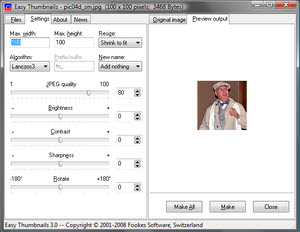 My first attempt at writing this post got all bound up in explaining why I do thumbnails the way I do. As I rearranged the second paragraph for the third or fourth time, I heard my own echo from long ago, “If it’s this hard to write, it’s going to be a bitch to read.” That’s usually a pretty good signal that a basic rethink is in order. When I stepped back, I quickly realized two things. One, some of my reasons are truly arbitrary and naturally hard to explain, and two, nobody cares. There aren’t many who care if I do something, fewer care how, and the number who care why has to be near zero. If someone does want to know why, just ask and I’ll be happy to explain and ‘fess up to the arbitrary bits. For now, I’m just going to talk about how I do them and how Easy Thumbnails fits in.
My first attempt at writing this post got all bound up in explaining why I do thumbnails the way I do. As I rearranged the second paragraph for the third or fourth time, I heard my own echo from long ago, “If it’s this hard to write, it’s going to be a bitch to read.” That’s usually a pretty good signal that a basic rethink is in order. When I stepped back, I quickly realized two things. One, some of my reasons are truly arbitrary and naturally hard to explain, and two, nobody cares. There aren’t many who care if I do something, fewer care how, and the number who care why has to be near zero. If someone does want to know why, just ask and I’ll be happy to explain and ‘fess up to the arbitrary bits. For now, I’m just going to talk about how I do them and how Easy Thumbnails fits in. I found
I found 
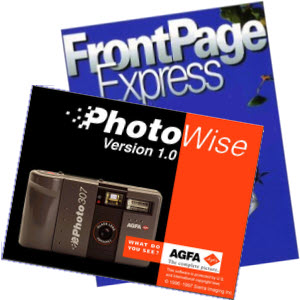 In
In  Like its big brother, FrontPage Express was a WYSIWYG (What You See Is What You Get) editor that allowed you to lay out a web page and position various elements on it without knowing HTML (Hyper Text Markup Language). It differed from full blown FrontPage in the type and number of elements supported and some other capabilities which, for the most part, were beyond me anyway. As with most editors of this sort, it also allowed access to the HTML behind the page.
Like its big brother, FrontPage Express was a WYSIWYG (What You See Is What You Get) editor that allowed you to lay out a web page and position various elements on it without knowing HTML (Hyper Text Markup Language). It differed from full blown FrontPage in the type and number of elements supported and some other capabilities which, for the most part, were beyond me anyway. As with most editors of this sort, it also allowed access to the HTML behind the page.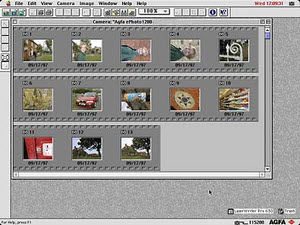 PhotoWise seemed to be exactly the program I needed to prepare pictures for the web. I could crop, resize, and rotate and there were adjustments for many image attributes including color and hue and saturation. About the only things I ever played with were contrast and brightness. Apparently I decided to post 512×384 pixel pictures for that first trip. That was half the resolution of the Agfa camera which meant I could trim away a fair amount of garbage if necessary. Pictures could be saved in four different quality levels. I used Medium (which was probably better than the pictures deserved) rather than High for smaller files. Once the full size picture was ready, I did some more cropping and shrinking to make thumbnails.
PhotoWise seemed to be exactly the program I needed to prepare pictures for the web. I could crop, resize, and rotate and there were adjustments for many image attributes including color and hue and saturation. About the only things I ever played with were contrast and brightness. Apparently I decided to post 512×384 pixel pictures for that first trip. That was half the resolution of the Agfa camera which meant I could trim away a fair amount of garbage if necessary. Pictures could be saved in four different quality levels. I used Medium (which was probably better than the pictures deserved) rather than High for smaller files. Once the full size picture was ready, I did some more cropping and shrinking to make thumbnails.